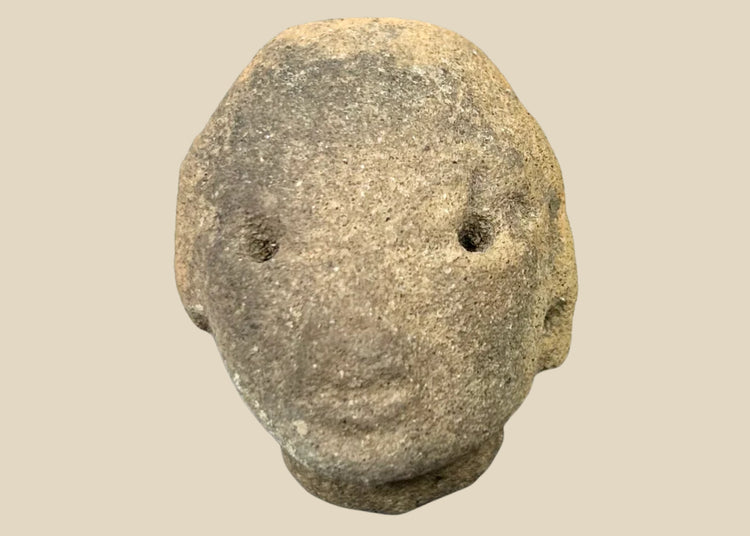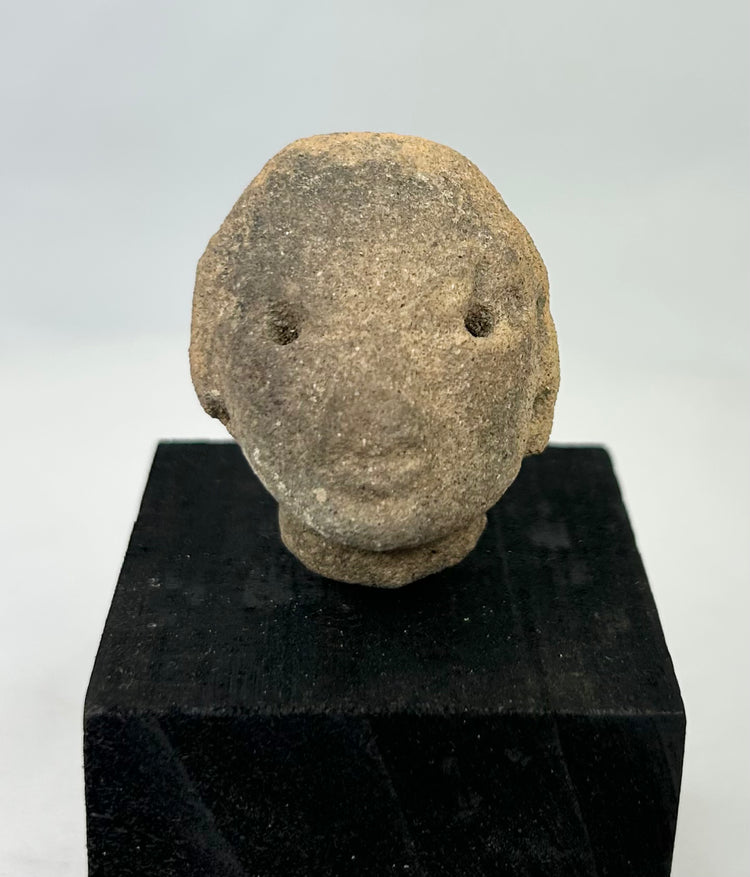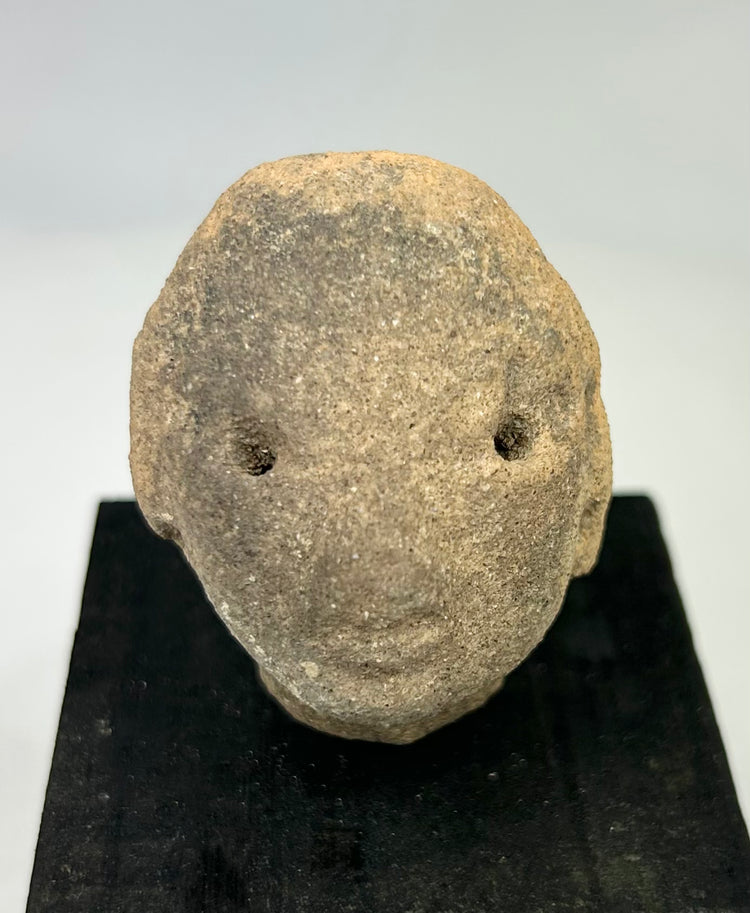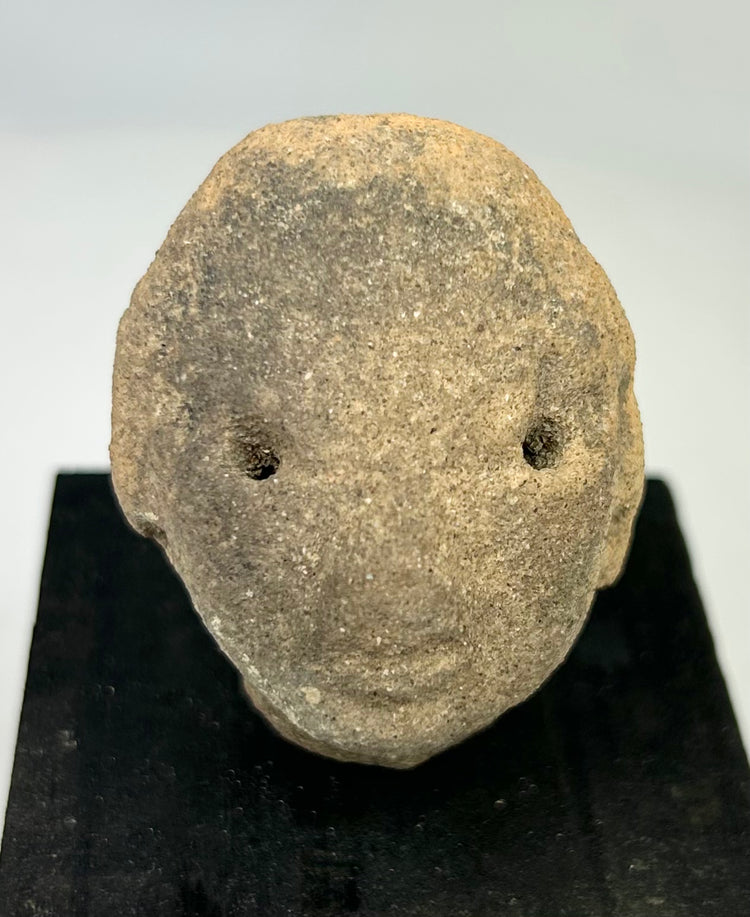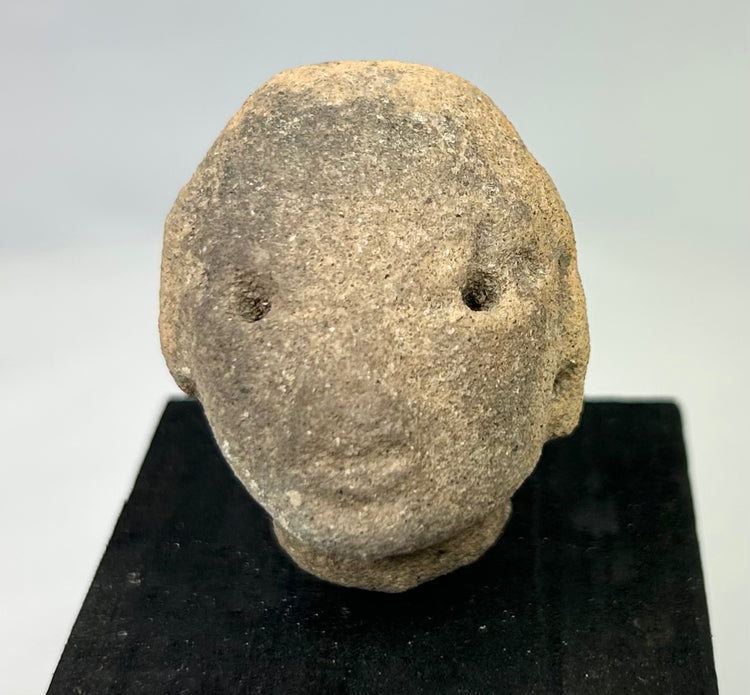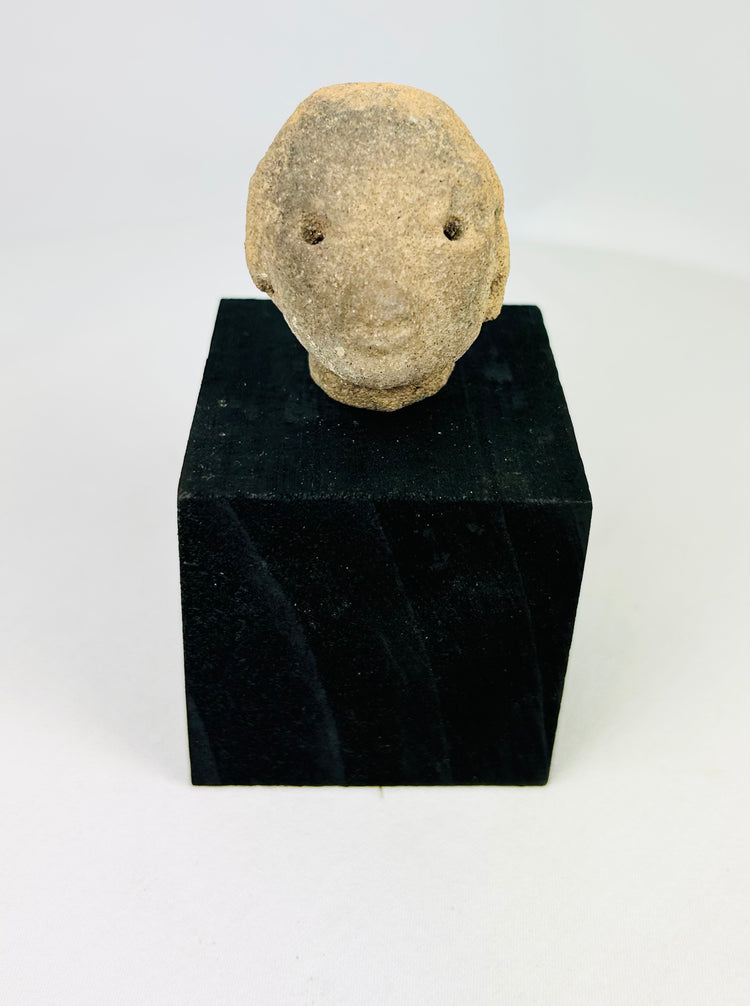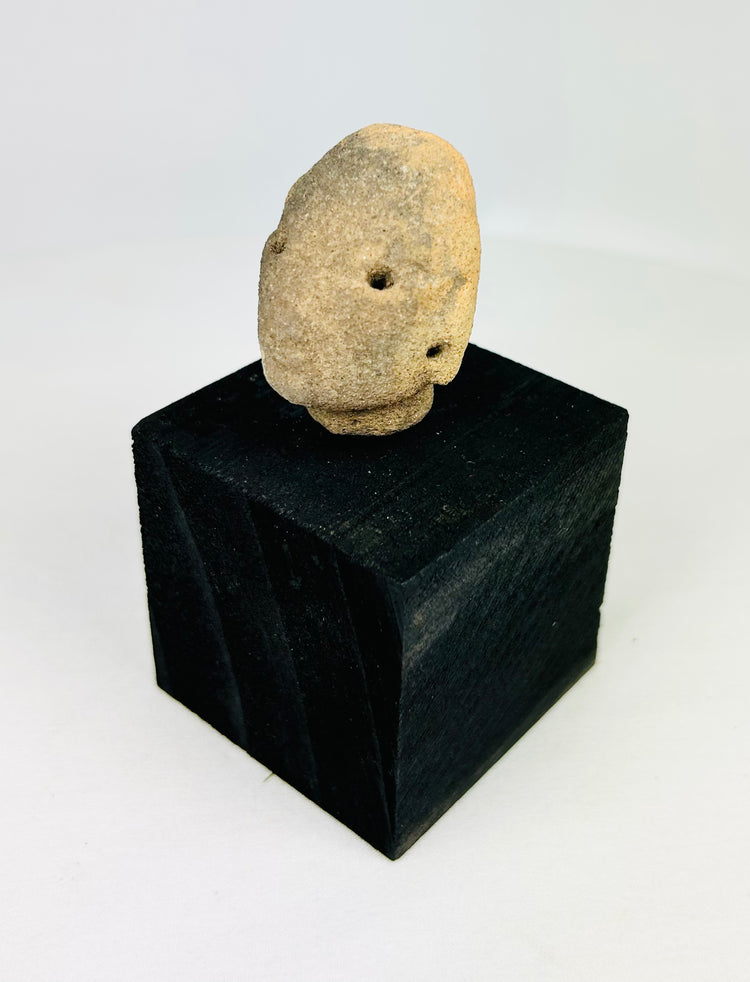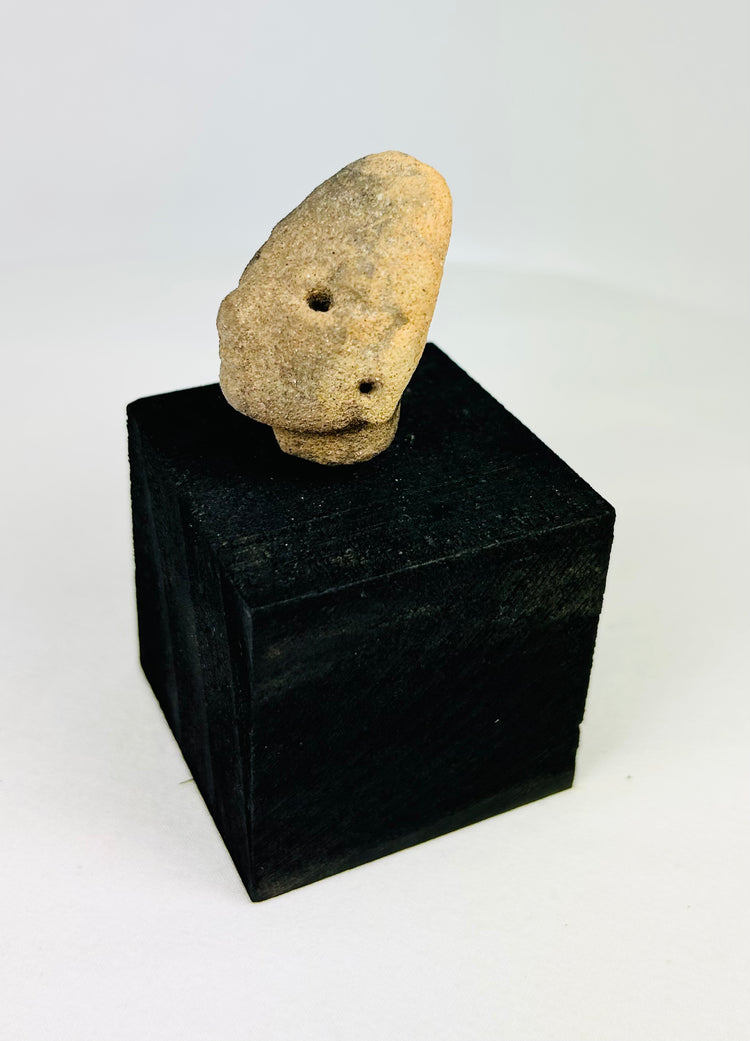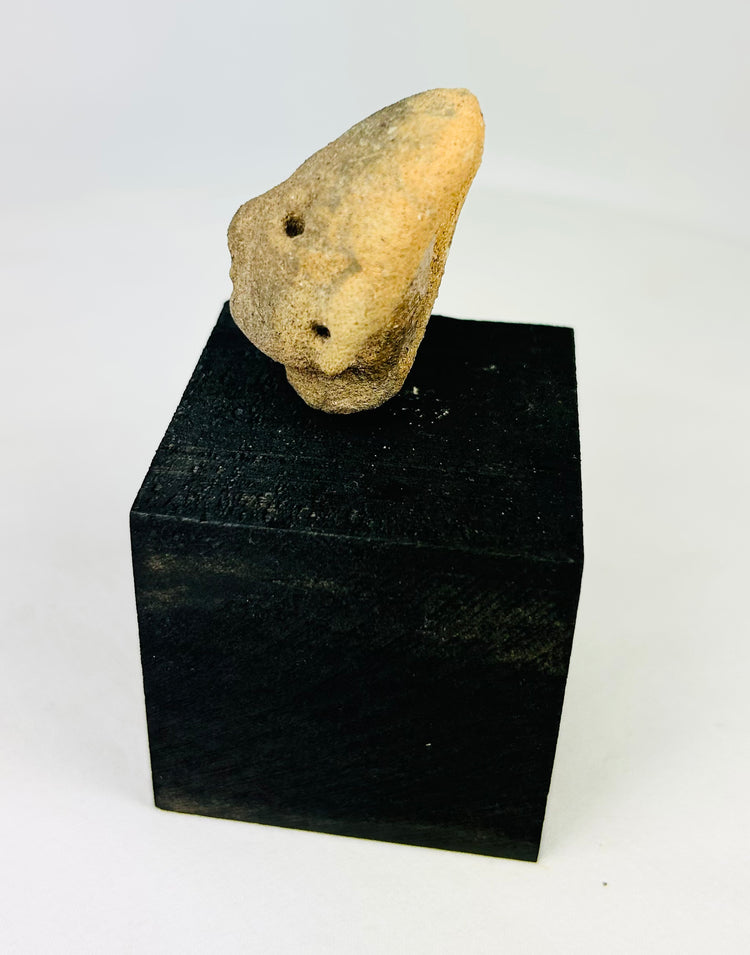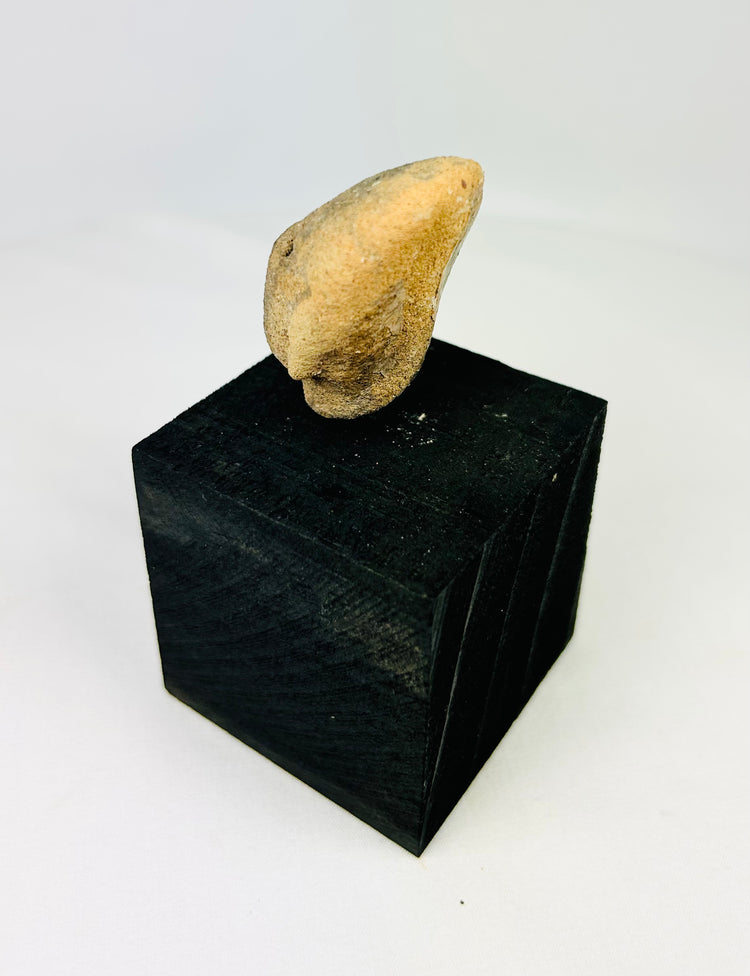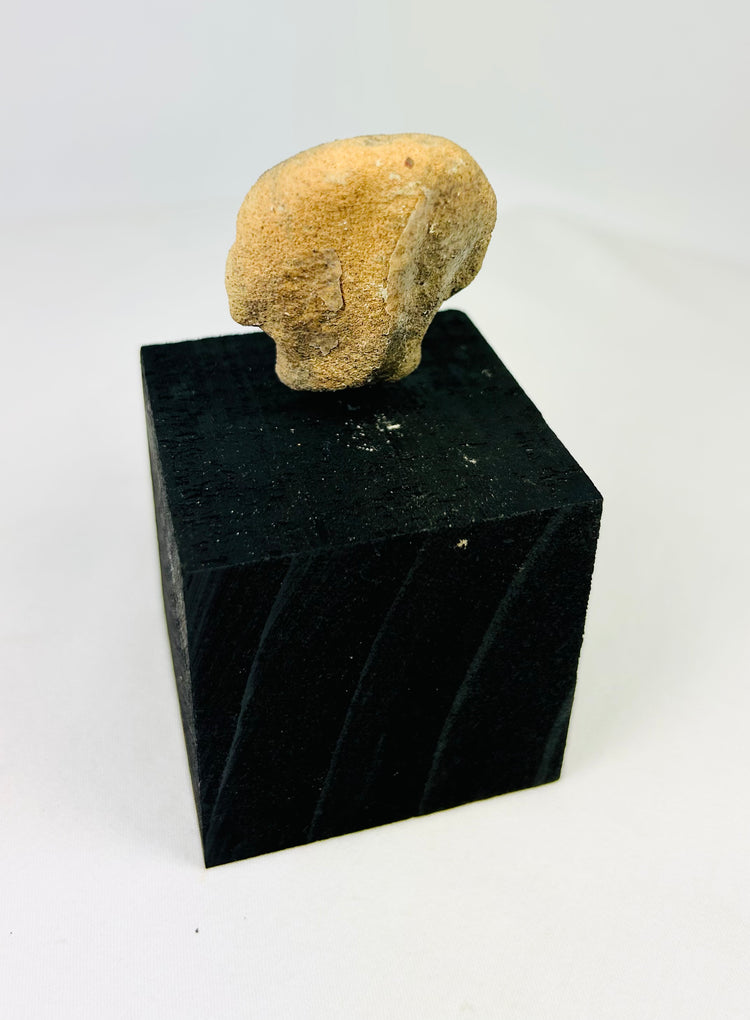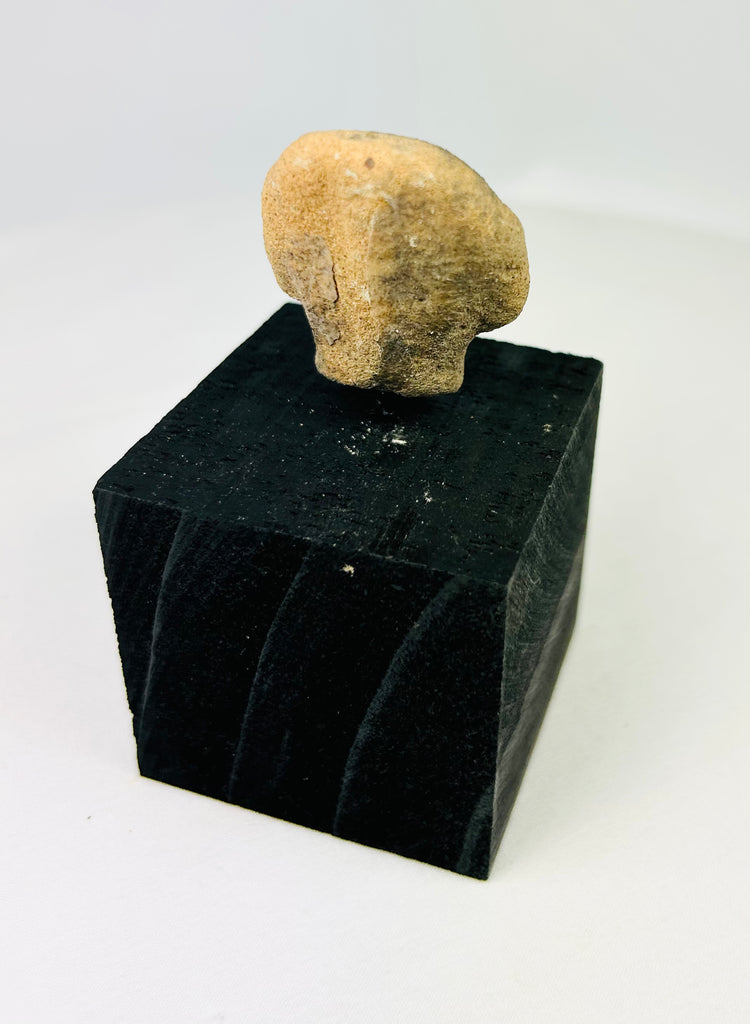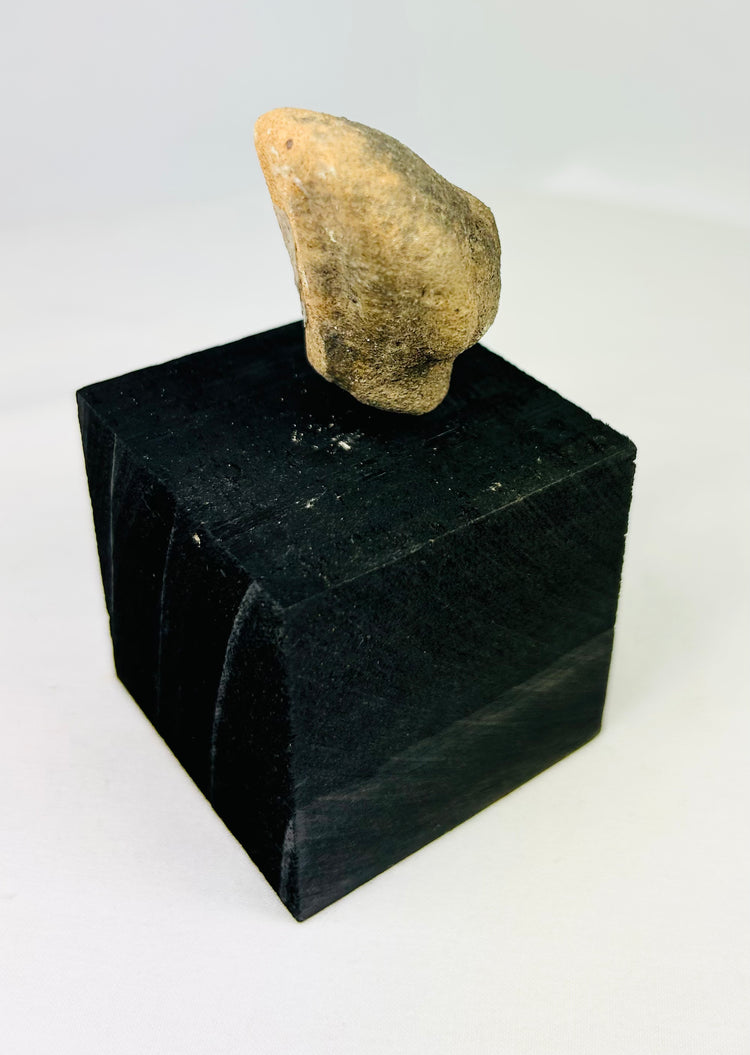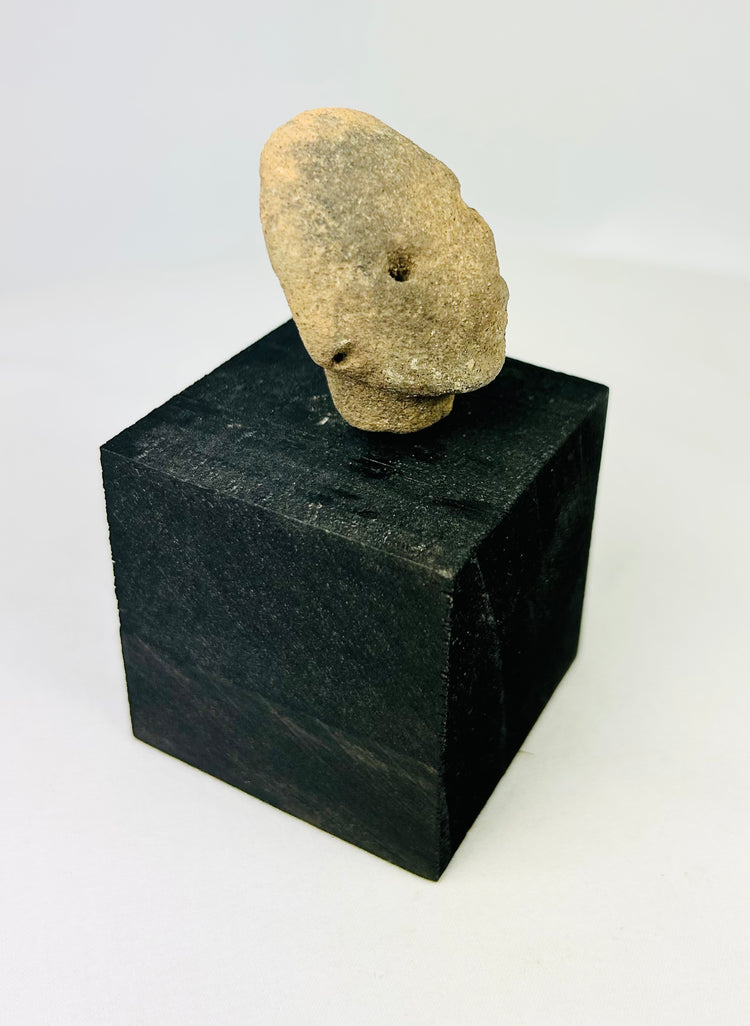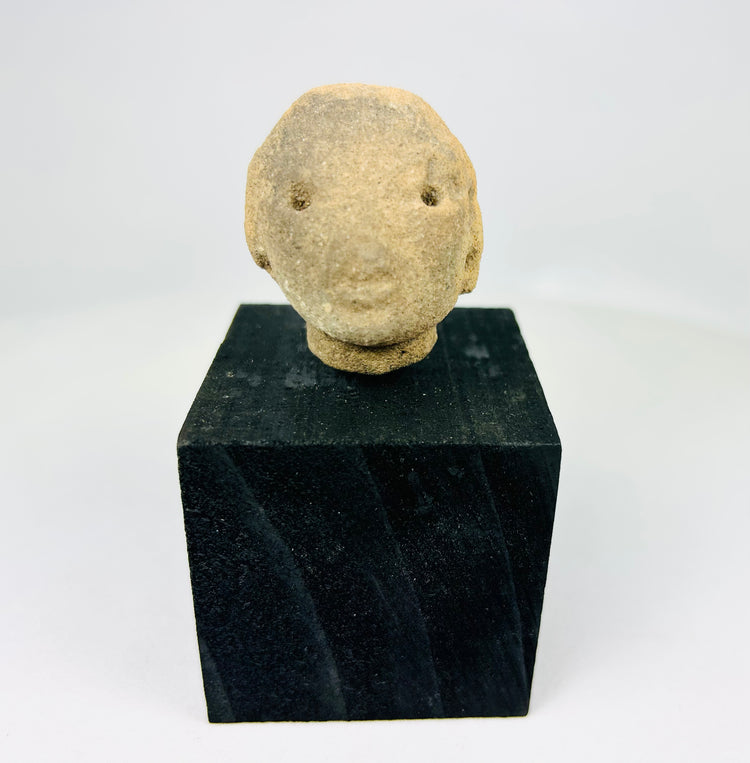Pre-Columbian Anthropomorphic Terracotta Head | West Mexico | 300 BCE–300 CE
Description
More
Less
Historical Context & Origin
Region: West Mexico, likely Nayarit or Jalisco
Material: Terracotta
Period: Circa 300 BCE–300 CE
Description
A small terracotta head fragment from a Pre-Columbian figure, finely modeled with rounded features. The face is characterized by drilled eye sockets, a softly shaped nose, and a subtle mouth, reflecting the stylized yet expressive qualities of shaft tomb artistry. Likely once part of a larger anthropomorphic figurine, the piece would have been used in ritual or funerary contexts as an offering or ancestral representation.
Features
- Simplified but expressive facial rendering
- Drilled eye sockets for definition and depth
- Subtly modeled nose and mouth
- Traces of ancient wear and mineral deposits
- Burial evidence consistent with shaft tomb artifacts
Cultural Significance
In West Mexico, terracotta figures were frequently placed in shaft tombs, where they represented ancestors, deities, or ceremonial attendants. Such artifacts served as spiritual protectors and symbolic companions for the deceased, reflecting both personal identity and broader ritual practices within early Mesoamerican culture.
Condition
Fragmentary head only, with surface weathering, encrustations, and soil deposits from burial. Stable, with no modern restoration. Mounted on a custom museum-style display stand.
Dimensions (approximate)
Height: 4 in
Width: 2 in
Depth: 2 in
Age
Approximately 2,300–1,700 years old (circa 300 BCE–300 CE)
Learn More
Explore Pre-Columbian art through this comprehensive collector’s guide: Pre-Columbian art — A new collector’s guide
Browse our full selection of Pre-Columbian collectibles: Pre-Columbian collections
Description
Historical Context & Origin
Region: West Mexico, likely Nayarit or Jalisco
Material: Terracotta
Period: Circa 300 BCE–300 CE
Description
A small terracotta head fragment from a Pre-Columbian figure, finely modeled with rounded features. The face is characterized by drilled eye sockets, a softly shaped nose, and a subtle mouth, reflecting the stylized yet expressive qualities of shaft tomb artistry. Likely once part of a larger anthropomorphic figurine, the piece would have been used in ritual or funerary contexts as an offering or ancestral representation.
Features
- Simplified but expressive facial rendering
- Drilled eye sockets for definition and depth
- Subtly modeled nose and mouth
- Traces of ancient wear and mineral deposits
- Burial evidence consistent with shaft tomb artifacts
Cultural Significance
In West Mexico, terracotta figures were frequently placed in shaft tombs, where they represented ancestors, deities, or ceremonial attendants. Such artifacts served as spiritual protectors and symbolic companions for the deceased, reflecting both personal identity and broader ritual practices within early Mesoamerican culture.
Condition
Fragmentary head only, with surface weathering, encrustations, and soil deposits from burial. Stable, with no modern restoration. Mounted on a custom museum-style display stand.
Dimensions (approximate)
Height: 4 in
Width: 2 in
Depth: 2 in
Age
Approximately 2,300–1,700 years old (circa 300 BCE–300 CE)
Learn More
Explore Pre-Columbian art through this comprehensive collector’s guide: Pre-Columbian art — A new collector’s guide
Browse our full selection of Pre-Columbian collectibles: Pre-Columbian collections
You May Also Like




































